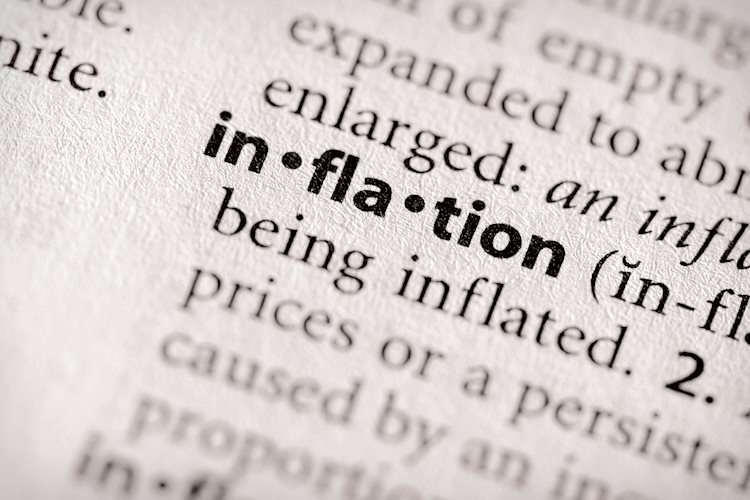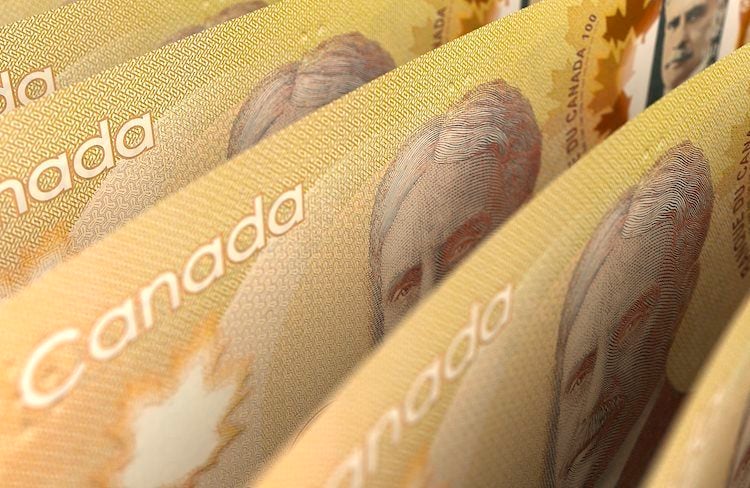Fed policymakers see one good inflation report as insufficient to change the trend.
ECB’s Schnabel also highlighted risks from premature interest-rate cuts.
EUR/USD drops to 1.0840 in Friday’s European session as market sentiment over upcoming interest-rate cuts turns slightly cautious after Federal Reserve (Fed) policymakers supported keeping the monetary policy stance restrictive for a longer period. These comments helped the US Dollar lick its wounds after the sharp fall induced by the decline in the United States (US) inflation in April, as shown by the Consumer Price Index (CPI) report released on Wednesday.
The corrective move in the major currency pair seems purely the outcome of the US Dollar’s recovery. However, the appeal for the Euro also remains upbeat as European Central Bank (ECB) policymakers are also casting doubts over the need to extend the rate-cut cycle immediately after a widely anticipated June rate cut.
In the early London session, ECB Board member Isabel Schnabel said the path beyond the June rate cut is uncertain. Schnabel added recent inflation data suggested that the last mile in the disinflation process is the most difficult, adding that she remained cautious about upside risks to inflation that could arise from premature rate cuts.
EUR/USD corrects from recent highs of 1.0900 as the US Dollar recovers after posting a fresh monthly low. The US Dollar Index (DXY), which tracks the Greenback’s value against six major currencies, finds buying interest near 104.00 and rebounds to 104.60.
The USD Index recovers after a slew of Federal Reserve (Fed) policymakers emphasized the need to keep interest rates at their current levels for a longer period on Thursday. Fed policymakers seem to keep a broadly hawkish stance on the interest-rate outlook, stating that one good US inflation data after a series of disappointments could not turn the table to rate cuts.
On Thursday, New York Fed Bank President John Williams said the monetary policy is restrictive and is in a good place. He doesn’t see any economic indicator suggesting the need to change the stance of monetary policy now. When asked about the inflation outlook, Williams said: “In the very near term, I don’t expect to get that greater confidence that we need to see on inflation progress towards a 2% goal,” Reuters reported.
While markets aren’t yet fully convinced that the US is back on the disinflation path, there are increasing concerns that the US labor market is losing its strength, which could keep firm odds for rate cuts in the September meeting intact. The uncertainty about US job market strength has escalated due to rising weekly Initial Jobless Claims.
The US Department of Labor reported on Thursday that individuals claiming jobless benefits for the first time for the week ending May 10 rose to 222K from the consensus of 220K. Although claims were lower than the prior reading of 232K, which was the highest level in eight months. Higher jobless claims indicate lower job opportunities or companies laying off employees or a mix of both. In April, the increase in Nonfarm Payrolls (NFP) was also significantly lower than estimates.
EUR/USD is gradually declining towards the breakout region of the Symmetrical Triangle formation, which is around 1.0830. The near-term outlook of the major currency pair remains bullish as a breakout of a triangle formation results in heavy buying volume and wider ticks. The shared currency pair seems well-established above the 50-day and 200-day Exponential Moving Averages (EMAs), which trade around 1.0780 and 1.0788, respectively.
The 14-period Relative Strength Index (RSI) has shifted into the bullish range of 60.00-80.00, suggesting a strong upside move ahead. Going forward, EUR/USD is expected to extend its upside towards the psychological resistance of 1.1000.
The Euro is the currency for the 20 European Union countries that belong to the Eurozone. It is the second most heavily traded currency in the world behind the US Dollar. In 2022, it accounted for 31% of all foreign exchange transactions, with an average daily turnover of over $2.2 trillion a day. EUR/USD is the most heavily traded currency pair in the world, accounting for an estimated 30% off all transactions, followed by EUR/JPY (4%), EUR/GBP (3%) and EUR/AUD (2%).
The European Central Bank (ECB) in Frankfurt, Germany, is the reserve bank for the Eurozone. The ECB sets interest rates and manages monetary policy. The ECB’s primary mandate is to maintain price stability, which means either controlling inflation or stimulating growth. Its primary tool is the raising or lowering of interest rates. Relatively high interest rates – or the expectation of higher rates – will usually benefit the Euro and vice versa. The ECB Governing Council makes monetary policy decisions at meetings held eight times a year. Decisions are made by heads of the Eurozone national banks and six permanent members, including the President of the ECB, Christine Lagarde.
Eurozone inflation data, measured by the Harmonized Index of Consumer Prices (HICP), is an important econometric for the Euro. If inflation rises more than expected, especially if above the ECB’s 2% target, it obliges the ECB to raise interest rates to bring it back under control. Relatively high interest rates compared to its counterparts will usually benefit the Euro, as it makes the region more attractive as a place for global investors to park their money.
Data releases gauge the health of the economy and can impact on the Euro. Indicators such as GDP, Manufacturing and Services PMIs, employment, and consumer sentiment surveys can all influence the direction of the single currency. A strong economy is good for the Euro. Not only does it attract more foreign investment but it may encourage the ECB to put up interest rates, which will directly strengthen the Euro. Otherwise, if economic data is weak, the Euro is likely to fall. Economic data for the four largest economies in the euro area (Germany, France, Italy and Spain) are especially significant, as they account for 75% of the Eurozone’s economy.
Another significant data release for the Euro is the Trade Balance. This indicator measures the difference between what a country earns from its exports and what it spends on imports over a given period. If a country produces highly sought after exports then its currency will gain in value purely from the extra demand created from foreign buyers seeking to purchase these goods. Therefore, a positive net Trade Balance strengthens a currency and vice versa for a negative balance.
Share:
Feed news
Information on these pages contains forward-looking statements that involve risks and uncertainties. Markets and instruments profiled on this page are for informational purposes only and should not in any way come across as a recommendation to buy or sell in these assets. You should do your own thorough research before making any investment decisions. FXStreet does not in any way guarantee that this information is free from mistakes, errors, or material misstatements. It also does not guarantee that this information is of a timely nature. Investing in Open Markets involves a great deal of risk, including the loss of all or a portion of your investment, as well as emotional distress. All risks, losses and costs associated with investing, including total loss of principal, are your responsibility. The views and opinions expressed in this article are those of the authors and do not necessarily reflect the official policy or position of FXStreet nor its advertisers. The author will not be held responsible for information that is found at the end of links posted on this page.
If not otherwise explicitly mentioned in the body of the article, at the time of writing, the author has no position in any stock mentioned in this article and no business relationship with any company mentioned. The author has not received compensation for writing this article, other than from FXStreet.
FXStreet and the author do not provide personalized recommendations. The author makes no representations as to the accuracy, completeness, or suitability of this information. FXStreet and the author will not be liable for any errors, omissions or any losses, injuries or damages arising from this information and its display or use. Errors and omissions excepted.
The author and FXStreet are not registered investment advisors and nothing in this article is intended to be investment advice.





